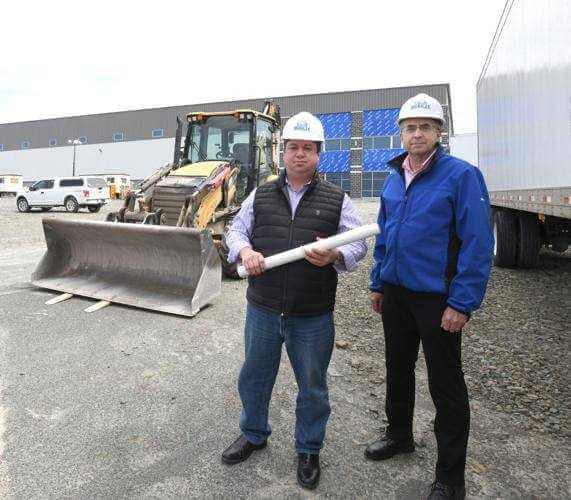
Northeastern Pennsylvania -
National trends in commercial real estate are so dire that academic researchers are using words like “apocalypse,” but Northeast Pennsylvania seems like a survivor.
The office space market here is doing all right, even as work from home is a new norm.
“We’ve been fortunate,” said John L. Augustine III, president and chief executive officer of Penn’s Northeast, an economic development group for an eight-county area that includes Lackawanna and Luzerne counties.
In a study called “Work From Home and Office Real Estate Apocalypse,” researchers from New York University Stern School of Business and Columbia University estimated in May that there was $506.3 billion “value destruction” nationally from 2019 to 2022.
The office vacancy rate for the Scranton/Wilkes-Barre metro area (which includes Hazleton) is 4.5%, according to Lauren Cozzi, a spokesperson for the National Association of Realtors.
Nationally, the NAR puts the national office vacancy rate at 13 %. Other national estimates vary, with some several percentage points higher.
Lackawanna County saw “the opposite of what the rest of the nation has seen from an office perspective,” according to AJ Cimahosky, economic development specialist with the Greater Scranton Chamber of Commerce, in an email. From 2019 to 2022, there was 2% decrease in Scranton’s office vacancy rate, he said. The current rate is 4.72%, he said, a figure he attributed to the Pennsylvania Association of Realtors.
“The current supply of commercial real estate in Lackawanna County is relatively low, with many properties not remaining on the market for too long. A limited supply and a steady stream of interest has caused prices to increase over recent years,” Cimahosky wrote.
In downtown Wilkes-Barre, 14% of commercial office space is vacant, according to Larry Newman, executive director of the economic development agency Diamond City Partnership. That’s based on the approximately 917,000 square feet of commercial office space in 17 buildings in downtown Wilkes-Barre.
A big problem, locally and nationally, is that there are a lot fewer people in those offices.
The number of people coming to work in downtown Wilkes-Barre in May was 56% of the May 2019 total, according to Newman.
The number of people working downtown is heading back up, but Newman isn’t banking on a return to pre-pandemic levels.
But demand for commercial properties in downtown Wilkes-Barre has remained strong, Newman said in an email, in part because of the residential market.
In the past 10 years, more than 318,000 square feet of office inventory was converted to residential use.
Newman expects some continued growth in the downtown residential market, but said most of the larger commercial downtown buildings appropriate for residential use have, or are in the process of, being converted.
Many late-20th-century office buildings have long distances between the core and exterior walls and windows that don’t open.
Much of the demand for new office construction comes from the medical sector.
The region’s real estate market isn’t dominated by office space, the way it is in places such as New York City, Augustine said.
At Mericle Commercial Real Estate Services, a major real estate developer and real estate broker based in Wilkes-Barre, Vice President for Marketing Jim Cummings, said they are seeing an increase in demand for manufacturing space.
Cummings cited recent leases to manufacturers Wren Kitchens, Logoplaste, Bridon-Bekaert: the Ropes Group and American Paper Bag.
A healthy mix of industry and warehouse property with good access to interstate highways, is one of the region’s strengths. “Our location certainly softens the blow,” Augustine said.
CAN DO, Inc., an economic development agency in Hazleton, did not return a request for comment.